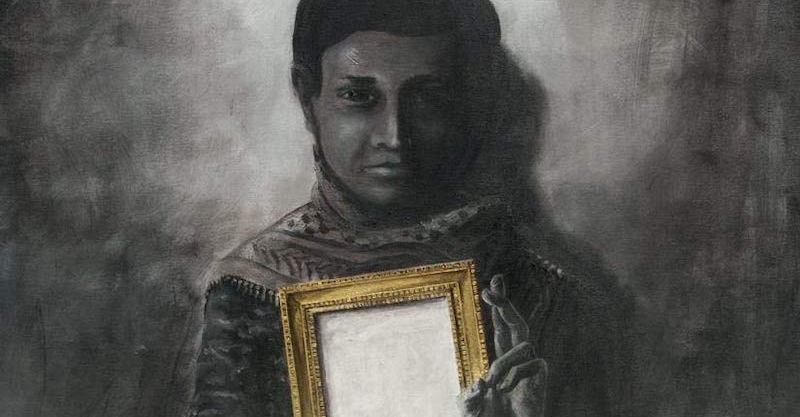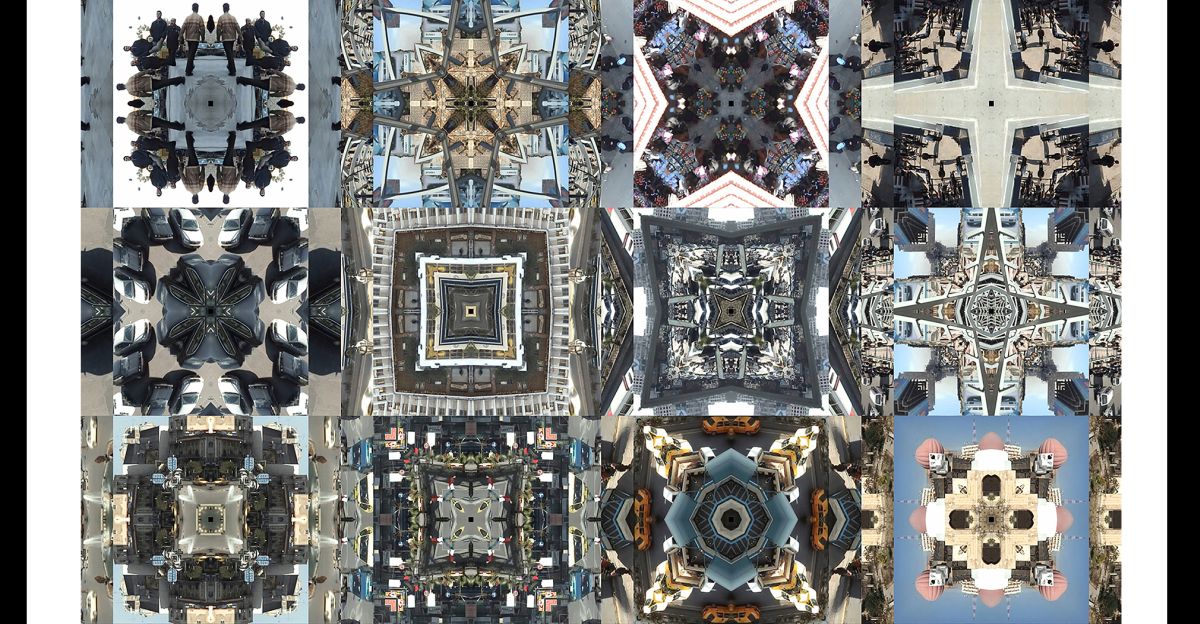In the Anglophone world, we are used to literature sitting at the periphery of political action. We see it recited at inaugurations and shared online as a reaction to state violence, but ultimately siloed to the sphere of ‘arts and culture’. As readers, we recognise the work literature can do to articulate the inarticulable. But even when the writing itself elucidates its political intention, we don’t seem to have the language and frameworks to consider literature in a way that is fully present in a political discourse.
In contrast, Palestinian writing has always been integral to the country’s liberatory politics. The likes of Ghassan Kanafani, Mahmoud Darwish and Fadwa Tuqan hold an enduring social and political legacy for their role in the project towards Palestinian revolution.
This profound impact came, in part, from conditions that fostered writing as a sharp instrument in Palestine’s political toolbelt. Written and distributed in opposition to Zionist propaganda, Palestinian resistance literature was widely circulated post-Nakba by the Palestinian Liberation Organisation (PLO), with dozens of political magazines and journals across the Arab world publishing poetry and serialised writing. Think of Kanafani’s Men in the Sun and its poignant depiction of Palestinian ṣumūd or steadfastness; and Darwish’s ID Card, which resists erasure of Arab subjectivity and community:
Write down
I am an Arab
& my ID card number is 50,000
& my children are eight in number
& the ninth
arrives next summer.
Does this bother you?
Today, literature remains embedded in the social and political fabric of Palestinian communities, and resistance literature continues to be produced within and outside of Palestine. Notably, the growing diaspora has contributed to a rich range of publications and translated works available in the Anglophone world. The Palestine Book Awards (2012) and the North American Palestine Writes Festival (2020) have helped to promote such work, while websites like The Baffler and The Electronic Intifada share writing by emerging Palestinian writers and artists.
Despite this, the status reached by writers of the pre-millennial period hasn’t been inherited by the following generations. A combination of the PLO’s self-defanging in the 1990s and the increased fragmentation of Palestinian communities mean the publication and distribution of resistance literature has shifted dramatically.
One only needs to glance at the reviews of any contemporary Palestinian novel or poetry collection to see the continued allusions to the ‘greats’ that remain household names for Palestinian communities. As a result, this writing sits at an awkward in-between, fervently linked to the historical legacy of resistance literature, while simultaneously lacking the institutional support to match its political impact.
It is not for lack of craft or eloquence that today’s writers don’t fill football stadiums when they perform. Nostalgia for a time which saw political leaders talk of the material military power of literature and poets pen UN-speeches is understandable, but if we acknowledge that this kind of status was dependent on institutional support that is currently unattainable, how might we read and think about the writing that’s happening now, on the terms it sets out? Figures like Noor Hindi, Sara M Saleh and Mohammed El-Kurd are writing prolifically in the present, with astute reflections on the possibility and limitations of resistance literature.
Understanding resistance literature in the post-Oslo, post-millennial, post-Intifada period requires a recognition of this material shift. But it doesn’t mean dismissing those links and legacies altogether. The spirit of community and steadfastness that underpins last century’s resistance literature remains an important connective thread, and to go too far the other way—reading today’s Palestinian writing as unmoored from the tenets of resistance literature—also does it a disservice. A reading that focuses exclusively on craft or personal expression, obscuring the historic and political grounding of these works, blunts the most generative and collaborative ways of thinking about literature.
So, how might we—in particular, pro-Palestinian allies and thinkers—navigate this murky in-between, at once finding strength in the legacied potential of resistance literature, while being clear-eyed about the current conditions and opportunities?
I think a more useful and generous kind of literary discourse is possible, which focuses on expansiveness in both the connections and interpretations we look for in this writing. While the lyrics of contemporary writers are, as yet, unlikely to be sung by schoolchildren, there is a capaciousness in our current media landscape that allows writing to be distributed widely, without formal publication, with more translated and English-language works being shared online than ever before.
The era of rockstar resistance writers might be resigned to last century, at least for now. But a sense of the community-building potential of literature endures from that legacy, and is something we as readers have a responsibility to preserve and extend. This community-building reaches both into and outside of Palestinian spaces, with ties to other resistance movements stretching back to the legacy-era. I’m thinking about Ghassan Kanafani’s powerful affirmation, that ‘the Palestinian cause is not a cause for Palestinians only, but a cause for every revolutionary, wherever he is, as a cause of the exploited and oppressed masses of our era’. I’m thinking about June Jordan’s poem, ‘Moving towards home’, and the unfinished duality of the suggestion, ‘I am become’:
I was born a Black woman
and now
I am become a Palestinian
against the relentless laughter of evil
In our current context, there has been a resurgence of writing that articulates cross-struggle solidarity—in particular, reconnecting Black and Palestinian resistance movements. Mohammed El-Kurd’s ‘Three Women’, for example, snapshots three feminine figures across Atlanta, Gaza and Jerusalem, citing Nina Simone’s ‘Four Women’ and Suheir Hammad’s ‘4.02pm’ in its dedication. Each section invokes a sense of perpetual violence and resistance with the bloodied images of state- and community-inflicted terror alongside a scene of childbirth. Fargo Tbhaki’s poem ‘in the walgreens carpark & indian school, another massacre’ connects Palestinian and Indigenous American ‘histories steeped in theft’. The poem’s speaker registers the violence enacted on indigenous children as ‘familiar as sea-stink on the breeze’, recognising the structures of state violence that impact both Palestinian and American communities, ‘may i sing their massacres, may i bring my own / to meet them’.
To read in community requires critics and readers to seek out these connections—to embrace a reading that, as writer and poet George Abraham describes it, is interested in ‘something beyond our current thinking on nation-building’. This calls for a cognizance not only of the legacies Palestinian writing comes from, but also of ‘the legacies we are building and the imaginations we are working to liberate.’
Abraham gestures at plurality here, drawing on the collaborative potential in workers’ struggles, anticolonial struggles and climate struggles. Their poem, ‘Love letter to the Eve of the End of the World’ asks: ‘How many times / Have we assumed ourselves writing from Apocalypse & not / Towards it?’ This imagines the dual possibility and impossibility of a future, not just for Palestinians, but for communities world-over. In explaining the poem’s link to climate change in a writer’s note, Abraham questions:
Is genuinely sustained and sustainable attention on climate change, and shared agency to work against climate change, possible without the dismantling of the western colonial world order?
The poem answers with a resounding ‘no’, highlighting the need for a radical and perhaps currently unthinkable restructuring of power, resources, and ways of thinking about the connections between people and place.
In a similar way, Noor Hindi’s brilliant essay ‘Identity. Politic. Confessional’ offers a kind of love letter to poetry as a form of social being. In ruminating on the complexities and contradictions in her subject position as a writer and a ‘Queer Palestinian American Muslim Woman’. Hindi invokes Bangladeshi-American poet, Tarfia Faizullah; Oglala Lakota writer and activist, Layli Long Soldier; and South Asian-American poet and screenwriter, Fatimah Asghar, among others. Hindi’s writing thinks with the potential of literature across national groupings and communities. She considers how, ‘when we talk about politics on the page, we’re asking what’s at stake,’ whether that is the enduring call for Palestinian liberation, a struggle against the carceral system, or a demand for redress.
Thinking about these bonds of solidarity isn’t to collapse the nuance and different demands of these struggles, but rather, to think about how we might find strength and common language across movements. Ultimately, reading in community opens up a new way of articulating the demand for Palestinian return. This contemporary writing has a richness which asks more questions than it answers—but in asking them, it extends our vocabulary and imagination for resistance.
Swallowing any dewy-eyed nostalgia, we can best do justice to contemporary Palestinian writing by recognising the expansive and transformative potential in the questions it asks and connections it draws in the here and now. Resistance literature’s call for ‘return’, then, might be refigured as an abolitionist claim. Abolition of the inadequate bureaucratic ‘solutions’ currently suggested for Palestine, of Israel’s settler-colonial project at large, and of the structures of power that dispossess communities across the globe. I’m thinking about daughter of the Palestinian diaspora, Zaina Alsous, and her writing on ‘a shared lexicon of resistance’. Alsous has written at length about resistance literature languaging return, not as a fixed point, but as a relation to be invented and reinvented. Her poem, ‘The Workers Love Palestine’, articulates this potential, drawing Palestinian existence as a collaborative exercise. The poem begins:
The week before the SUN announced hospice
my great-great-great-great-grandchild the harpist announced:
WORKERS OF THE WORLD
JOIN THE STRIKE FOR GUARANTEED LIGHT
The florists union in Caracas and the Algerian weavers presented joint proposals
TOWARD ILLUMINATION THAT MULTIPLIES
While the ‘my’ suggests a personal narrative, the poem’s insistent pluralisation rejects a singular identity. The poem’s named figures—the workers, the weavers, the florists—are considered in community, presenting ‘joint proposals’. The harpist and the poem’s speaker are located and named in relation to their ancestral line. This framing resists anything but the broadest categories for identification, allowing the poem’s ‘me’ and ‘I’ to be transformed into a ‘we’, which is not exclusive to the poem’s titular Palestine. These lines speak to the inalienable links between decolonial and workers struggles, with the apocalyptic echoes of a retiring sun suggesting impact and necessary action that reaches beyond borders.
In a prologue to the poem on Jewish Currents, Culture Editor Claire Schwartz talks about Alsous’ resistance to ideas of return as reversal. She writes about Alsous’ vision of return as its own displacement, of what is to make space for a world in which ‘the conditions of the expulsion are unthinkable’. This involves refiguring displacement from its violent associations of settler occupation to imagine a broader mode of Palestinian liberation:
This land is land
Land is land
LAND LANDI AM COMING
HOME
The poem’s final, struck out line performs a refusal, doing work, as Schwartz puts it, to ‘join the strike’. But it also transforms the sense of what the speaker is coming towards. When reading the poem aloud, Alsous withholds this final line altogether. Shifting emphasis to this ‘coming’ as the final spoken line reframes the focus of what ‘return’ might look like. Both the future the poem is striving towards, and the very process of that striving, requires a wider union of the dispossessed. HOME is struck out and imaginatively replaced with this broader call—towards an ‘ILLUMINATION THAT MULTIPLIES’. A way of reading that recognises the ability for this expansiveness to illuminate, rally, and sustain takes the best from the resistance literature that has been, while celebrating the radical potential of resistance literature, now.
Image: a detail from the cover of George Abraham’s Birthright



